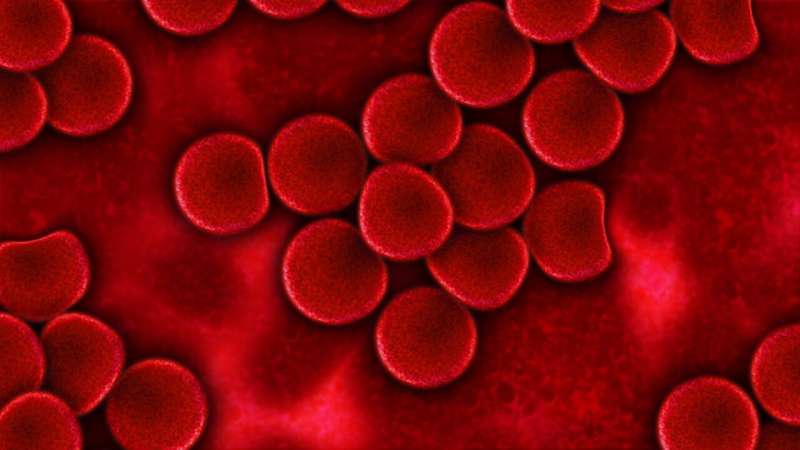Gene therapy more cost effective than current treatments for hemophilia B

A St. Jude Children's Research Hospital analysis found a major gap between the cost to manufacture and distribute hemophilia B gene therapy and the $2 million-plus price reportedly under consideration for hemophilia gene therapy now in development.
The study appeared online in the journal Blood. It is the first to report gene therapy production costs.
St. Jude researchers have pioneered and produced gene therapy for several disorders, including hemophilia B. This inherited bleeding disorder affects about 1 in 30,000 people, primarily men.
The analysis relied on the hospital's own cost data. Researchers calculated the total per-patient cost of manufacture, distribution and five-year follow-up of gene therapy for severe hemophilia B patients as $87,198.
"Many factors go into setting the price of new pharmaceutical drugs. Production costs are just part of the equation, and while they do not tell the whole story, they are all too often missing from the conversation," said Nickhill Bhakta, M.D., of the St. Jude Global Pediatric Medicine Department. He and Ulrike Reiss, M.D., of the St. Jude Department of Hematology, are co-senior authors.
The high cost of U.S. prescription drugs has made headlines in recent years. Researchers hope that by disclosing St. Jude cost data, the analysis will promote greater transparency and evidence-based discussions around price equity and what lifesaving therapies should cost society.
Hemophilia B: Cause and current treatment
Hemophilia B is caused by a mutation in the factor IX gene that can result in dangerously low levels—less than 1%—of an essential clotting protein of the same name. Scrapes and bumps are medical emergencies for those with severe disease.
Current therapy involves infusions with clotting-factor replacement therapy in different formulations to prevent or treat bleeding. Depending on the formulation, factor replacement ranges from about $300,000 to $776,000 annually. Preventive (prophylactic) therapy requires infusions several times each week.
Gene therapy: Promise and uncertainty
Gene therapy is designed to dramatically reduce or eliminate the need for factor-replacement therapy. The process involves a single outpatient infusion of a working copy of the factor IX gene, with the effect lasting for years. At least four different vectors to deliver the factor IX gene are in development.
"More and more data show the success of gene therapy in hemophilia with reduced bleeding rates and factor use and significantly improved quality of life for these patients," Reiss said.
Insurance companies and other third-party payers consider the cost effectiveness of treatment when deciding on reimbursement, but data comparing hemophilia B treatments have been limited.
"Gene therapy is different because unlike other treatment approaches, it is a long-lasting, one-time treatment and may require a big upfront payment, a payment that can make the affordability seem questionable. Our analysis' importance is that it sheds light on the many factors that could play a role in the decision-making process regarding reimbursement," said Nancy Bolous, M.D., of St. Jude Global Pediatric Medicine. She is the study's first and corresponding author.
The analysis
The St. Jude analysis focused on the experimental adeno-associated virus (AAV)-mediated gene therapy developed by St. Jude and University College London/Royal Free Hospital. The gene therapy was made at the Children's GMP, LLC, on the St. Jude campus and was used in clinical trials of adults with severe hemophilia B.
The St. Jude study estimated and compared the cost and cost effectiveness of gene therapy and two different approaches, on-demand and prophylaxis, of factor-replacement therapy from the perspective of third-party payers in the United States. Researchers considered more than 100 treatment scenarios, including factors ranging from treatment costs and the age of patients at gene therapy infusion to the success and durability of the response to gene therapy. While the results are based on data for hemophilia B, the approach also provides a template for future cost effectiveness studies of other novel gene therapies.
Given the high cost of the current hemophilia B factor-replacement treatment, the analysis suggests that even if priced up to $3 million per patient, gene therapy would be the most cost-effective treatment in 92% of the scenarios.
These data are in line with the possible prices of gene therapy in the health care marketplace. Gene therapy is still experimental, and a price has not been announced. A 2020 story in the Wall Street Journal about gene therapy for hemophilia A mentioned a possible per-patient price of $2 million to $3 million. That would make it one of the world's most expensive drugs.
More information: Nancy S. Bolous et al, The Cost-effectiveness of Gene Therapy for Severe Hemophilia B: Microsimulation Study from the United States Perspective, Blood (2021). DOI: 10.1182/blood.2021010864

















